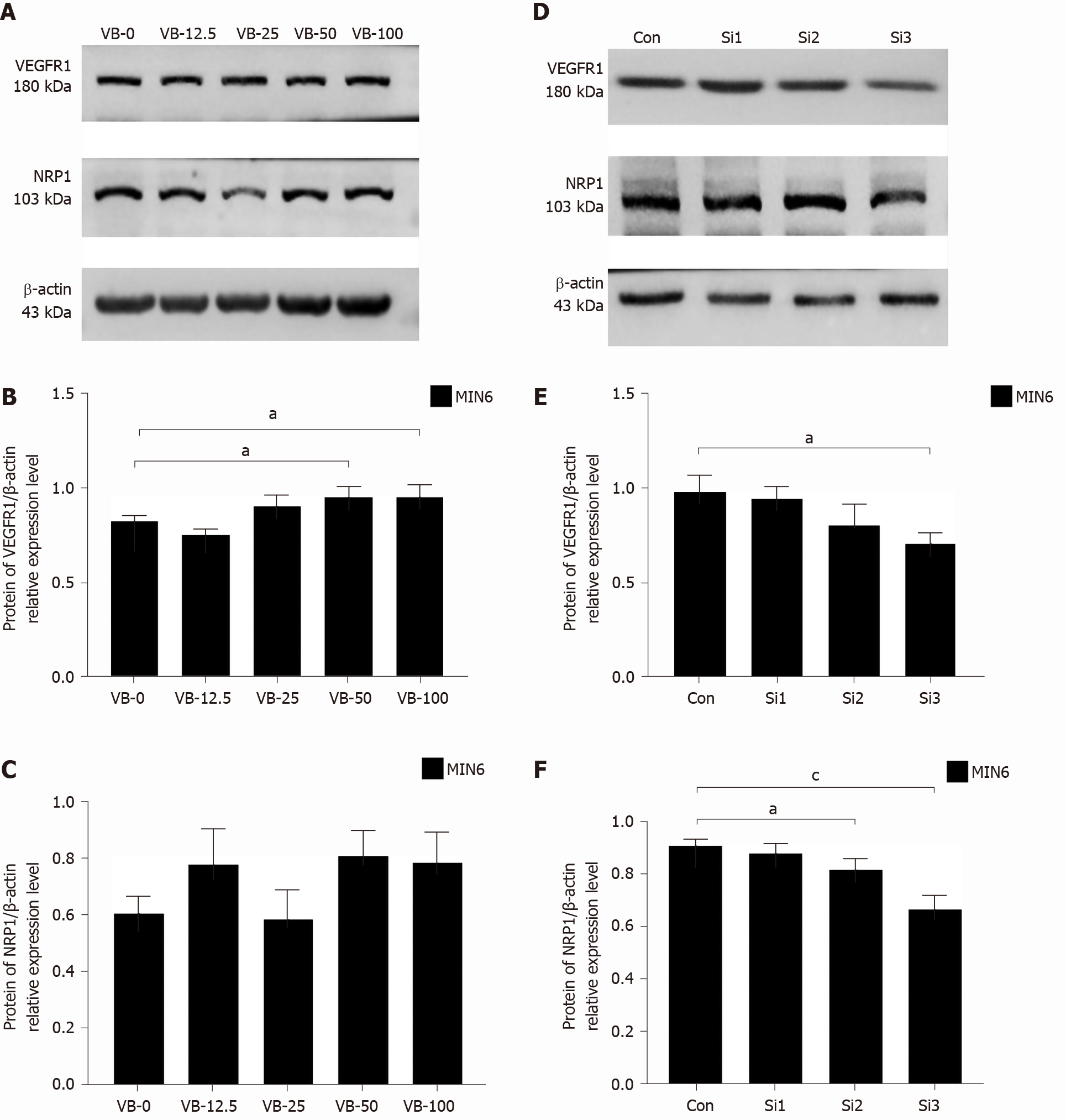Copyright
©The Author(s) 2021.
World J Diabetes. Apr 15, 2021; 12(4): 480-498
Published online Apr 15, 2021. doi: 10.4239/wjd.v12.i4.480
Published online Apr 15, 2021. doi: 10.4239/wjd.v12.i4.480
Figure 2 Exogenous vascular endothelial growth factor B stimulation increases the expression of vascular endothelial growth factor B receptor 1, while vascular endothelial growth factor B small interfering RNA transfection decreases the expression of vascular endothelial growth factor B receptor 1 and neuropilin 1.
A-C: Western blot analysis revealing the relative protein expression of vascular endothelial growth factor B receptor 1 (VEGFR1) and neuropilin 1 in cells stimulated with exogenous VEGF-B and corresponding statistical data; D-F: Western blot analysis indicating the relative protein expression of VEGFR1 and neuropilin 1 in cells transfected with VEGF-B small interfering RNA and corresponding statistical data. Student's t-test was performed. aP < 0.05 vs Control; cP < 0.001 vs Control. NRP1: Neuropilin 1; VEGF-B: Vascular endothelial growth factor B; VB: VEGF-B; Con: Control; Si: Small interfering RNA; MIN6: MIN6 cell.
- Citation: Jia JD, Jiang WG, Luo X, Li RR, Zhao YC, Tian G, Li YN. Vascular endothelial growth factor B inhibits insulin secretion in MIN6 cells and reduces Ca2+ and cyclic adenosine monophosphate levels through PI3K/AKT pathway. World J Diabetes 2021; 12(4): 480-498
- URL: https://www.wjgnet.com/1948-9358/full/v12/i4/480.htm
- DOI: https://dx.doi.org/10.4239/wjd.v12.i4.480









